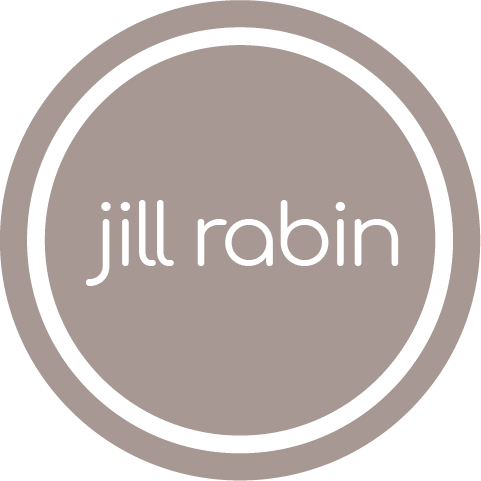This is the second in a three part series on preparing to breastfeed your baby with Down syndrome, written specifically for women with a prenatal diagnosis by Jill Rabin, an International Board Certified Lactation Consultant and Pediatric Speech Pathologist. Read the first part here.
How do I manage breastfeeding once my baby is born?
Congratulations! The moment you’ve been waiting for is finally here and you’ve had your baby! If you’ve had a prenatal diagnosis of Down syndrome you’ve likely done all of the research you could think of. You may be a bit nervous about your baby and if he or she will be healthy or will need extra special attention. Maybe you wonder if he or she will need to be in the neonatal intensive care unit (NICU). If you want to breastfeed you are probably wondering if you will be able to try to latch your new baby right away. Well, much of what will transpire in the next 24 hours will be contingent on your baby’s medical condition when they are born. It is now time to use the knowledge you have acquired prenatally to determine what needs to be done to facilitate a successful transition to breastfeeding. One of the most important things that you can do to ensure the best possible chance of breastfeeding for your baby is to communicate your intentions to your medical team. This way you can build support and encouragement right from the start.
We think it is important to note that there is an “ideal” way to initiate breastfeeding and there is the “real” way. For babies with Down syndrome we often have to go with the flow and work within the framework of what we have. Sometimes our babies are medically complex or sometimes mom or baby have other challenges that need to be managed right away and breastfeeding takes a backseat. That is why it is so important to have a plan from the start so that your intentions don’t get lost. Just remember, as long as you are pumping to establish and maintain your supply you have the basis for a breastfeeding relationship. Now, let’s get down to details!
Once your baby is born, if possible, you want to latch him or her onto the breast right away. This allows for early imprinting which makes each successive feeding attempt easier. If possible, request that the hospital staff delay giving your baby a bath as there is new research out that suggests delaying infant’s first bath for first 8-24 hours improves maternal-infant bonding and encourages breastfeeding. If for any reason, your baby can’t get to the breast after birth, you need to start pumping as soon as possible, ideally within six hours, to establish a milk supply. This is absolutely key to protecting the possibility of a successful breastfeeding relationship in the future. Your baby may or may not be able to suckle directly right away. Some babies are not able to even attempt to breastfeed for hours or days. As long as you protect your supply by pumping you have the possibility of transitioning baby to the breast. Sometimes hand expression of colostrum, which this video demonstrates well, can be more effective than pumping in the first 24 to 48 hours. You can have the hospital’s International Board Certified Lactation Consultants (IBCLC) assist you. If your baby is unable to latch right away for any reason, request help immediately from a hospital lactation consultant so she can assess the situation early on and better help you to get your baby to the breast. Early identification and intervention of issues can make a huge difference in establishing breastfeeding. For babies with Down syndrome, there may be pressing medical concerns that prevent skin-to-skin contact but many moms are so overwhelmed right after birth that they don’t even ask. It never hurts to put in a respectful request to have even a moment or two of skin-to-skin contact with your baby, which will help promote bonding. This should be possible for many babies, even with the diagnosis of Down syndrome.
The lactation consultant may utilize a variety of different devices that can help to facilitate breastfeeding. One of these devices is a nipple shield. This is a flexible silicone shield that goes directly over the mom’s nipple. It can help babies with low muscle tone to better latch on to the breast and sustain a sucking pattern. It is often only needed for a short period of time and the baby can eventually be weaned from using it. Your lactation consultant may also suggest trying a supplemental nursing system (SNS), which is a thin plastic tubing system. One end is taped to your breast and the other is attached to a bottle of your pumped milk. The SNS allows your baby’s sucking efforts, which may initially be weak or ineffective, to be rewarded with mom’s milk. It has the added benefit of forming an association between being at the breast and having a full belly. It also helps your baby establish the appropriate suckling motions and encourages bonding. Use of this equipment is often short term but can be vital in making the transition to exclusive breastfeeding.
It is often important for medical professionals to closely monitor your baby’s intake and output. This may seem incompatible with breastfeeding and some moms agree to bottle-feeding to satisfy the desire to ensure baby is getting enough so he or she can be cleared to go home. However, that is not the only option! You can request weighted feeds, where you weigh your baby with a digital scale before and after a breastfeeding session to estimate how many ounces he or she has consumed. Even if, for some reason, your baby is required to take nutrition from a bottle (or an NG tube) it does not mean that you will never have a successful breastfeeding relationship. You can still attempt to breastfeed while your baby is receiving nutrition from an NG tube, allowing for practice of appropriate suckling and to associate the breast with a full belly. It is important to advocate for your baby and your breastfeeding relationship but sometimes medical concerns take precedence. It may provide comfort to know that babies with Down syndrome sometimes hit bumps in the road to breastfeeding and many go on to overcome them.
In addition to the lactation consultant, if your baby has initial issues with feeding while in the hospital, a speech pathologist may get involved to help with the transition to oral feedings. The addition of a speech pathologist can be vital to ensuring that your baby is successful with oral feedings. However, while there are many speech pathologists who are experts in feeding and swallowing, they do not always have a lot of knowledge or experience with assisting breastfeeding babies. Therefore, it is essential that the lactation consultant and speech pathologist collaborate using a team approach to get your baby to the breast.
More on transitioning to home in the third installment of this series but it is important to work closely with the hospital IBCLCs to develop a feeding plan that includes weight checks to determine milk transfer and if the use of breastfeeding equipment like a nipple shield is required. Also, request a recommendation from the IBCLC for a referral to a professional that can follow you at home if continued support and intervention is necessary. They can also assist you in locating where you can rent a digital scale for home use if your baby is not gaining weight adequately.
Remember first and foremost that early assistance from a qualified professional can help guide you on this journey. Planning, professional support, and knowledge about how to manage breastfeeding obstacles will help make the transition to breastfeeding a reality. And, we are here to support and encourage you along the way! We would love to hear about your breastfeeding successes and struggles.

